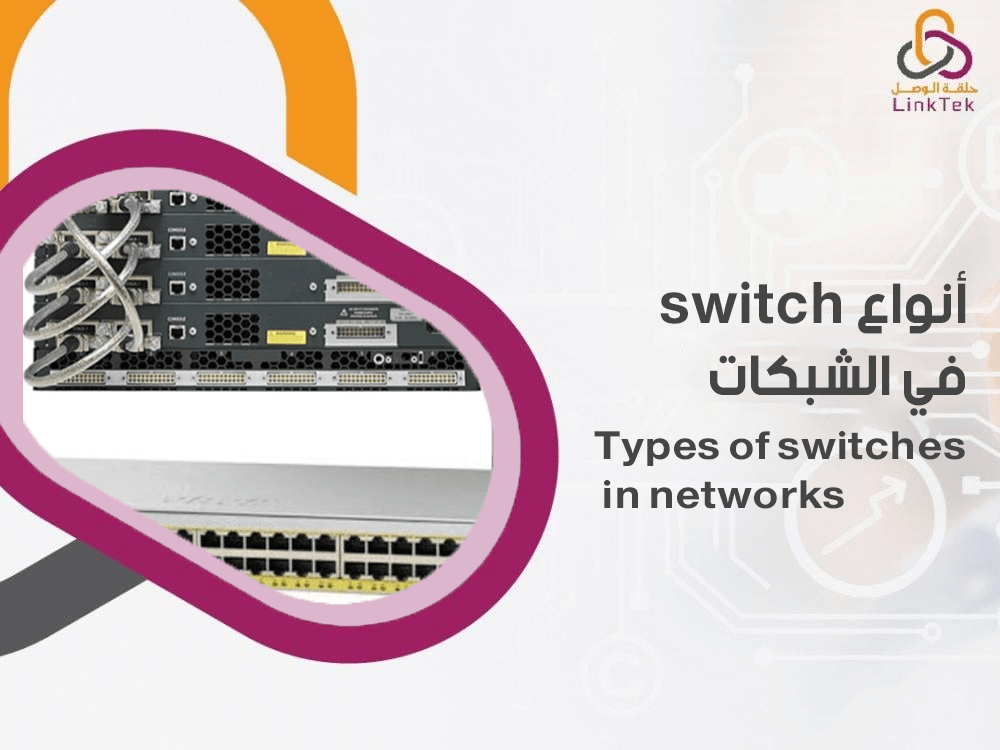
Communication and data transfer between different individuals and sections in the company with the least effort and least cost is the target that every company needs to reach. Nowadays, recent technology can provide this goal easily and with convenience. One of the modern technologies that can provide this target is the switch, and of course great knowledge with switch devices can give the best method of using them. In this article we will help you to be aware about types of switches in their importance to companies.
What are the types of switches in companies?
Of course you need to be aware of the different types of switches in companies to choose between them, and to get the most suitable switch for your company. And that's what we are going to tell you in the following letters.
- Managed switch: in which the user can manage the switch distance and can manage different settings related to it. This type of switch is not easily used and not easily installed and it is usually used in large and the middle networks.
- Unmanaged switches: this switch is characterized by being easily installed and easily used. This switch is usually used in small networks due to its easy use.
- Switch from the second layer: this type of switch represents the second layer of the OSI model of data transfer. This switch uses MAC addresses to transfer data between devices. This switch depends on simple techniques for data transfer which made this switch more suitable for middle and small networks.
- Switches from the third layer: these switches can transfer data between devices based on MAC address and IP address as well. Switches from the third layer of the OSI model can do both jobs of router and switch, as it can do the jobs of routing and broadcasting at the same time. This device is suitable for large and middle networks with its advanced techniques.
- Smart switch: this type of switches can have the advantages of managed and unmanaged switches, as it is characterized by their easy installation and low cost.
- Stacked switch: it is a switch device connected to other switches to function as a single unit, making it easily expandable and providing centralized management for all connected switches.
- Ethernet switch: it is a type of switch that can receive power through a network cable, allowing it to supply power easily while transmitting both data and power. This type of switch is used in companies to connect surveillance devices or access points.
What are the importance of a switch devices to companies
Switches can do a lot of functions to companies otherwise their size as switches can do the following functions:
- Data rooting and the transfer in a specialized manner inside the local network.
- Insuring protection and security of data during its transfer between device to device.
- Providing safe and fast connection to companies through which it can transfer data rapidly and efficiently.
- Some switches can provide central management to companies and let companies manage data transfer between their devices.
- Facilitating network expansion and easily adding devices to operate by dividing the network and reducing collisions within it.
- Improving the management of corporate networks through applications that enhance service quality, such as the QoS feature and other functionalities.
How can you choose the most suitable switch?
Based on what we have previously mentioned, you can choose the most suitable switch for your company, but what are the details you need to know in order to decide the most suitable switch for your company. That's what we are going to mention in the following letters.
- The available budget: as middle and small companies can choose second layer switch and smart Switch or managed switch, while large companies can choose ethernet switch, third layer switch or stacked switch, as their prices can fit with their budget.
- Management ability: as large companies need to manage their network, which makes a managed switch the perfect solution in this case while small companies may not need this feature.
- Number of ports: as the number of users in the company will control the number of ports you will need and consequently you will need a switch with the larger number of ports.
- Speed of ports as usually crowded networks will need higher port speeds that may reach up to 10 Gbps, while in less densely populated networks, the required speeds may reach up to 1 Gbps.
- Support for advanced features: Some companies may need switches with advanced features such as security capabilities, Quality of Service (QoS) features and others.
With the variety of tasks requiring communication and data transfer between different devices in companies, the types of switches and their importance to companies vary depending on these needs. All you need to do is to evaluate your company's requirements and choose the most suitable switch to handle and perform the various tasks required by your company.

